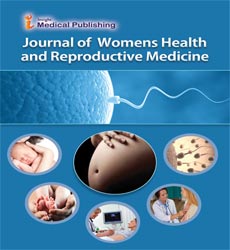Initiation and Duration of Breast-feeding in Hypertension Women's
Meh Samuel*
Department of Obstetrics and Gynecology, Baylor College of Medicine, Houston, USA
- *Corresponding Author:
- Meh Samuel
Department of Obstetrics and Gynecology,
Baylor College of Medicine, Houston,
USA,
E-mail: Sam@gmail.com
Received date: November 13, 2023, Manuscript No. IPWHRM-23-18387; Editor assigned date: November 16, 2023, PreQC No. IPWHRM-23-18387 (PQ); Reviewed date: November 30, 2023, QC No. IPWHRM-23-18387; Revised date: December 07, 2023, Manuscript No. IPWHRM-23-18387 (R); Published date: December 14, 2023, DOI: 10.36648/ipwhrm.7.3.71
Citation: Samuel M (2023) Initiation and Duration of Breast-feeding in Hypertension Women’s. J Women’s Health Reprod Med Vol.7 No.3:71.
Introduction
There is extensive proof exhibiting that breastfeeding lessens risk for maternal cardiovascular illness. Studies looking at the relationship among breastfeeding and hypertension sometime down the road have reliably shown that moms who breastfeed longer are less inclined to create hypertension. Breastfeeding has likewise been related with decreased risk for diabetes mellitus hyperlipidaemia coronary heart disease and metabolic syndrome. A new meta-examination including information from >2 million porous ladies exhibited that breastfeeding diminished maternal gamble of cardiovascular illness, coronary illness, stroke, and lethal cardiovascular disease. There is less proof in regards to transient impacts of breastfeeding on cardiovascular wellbeing; little investigations showed that breastfeeding is related with momentary upgrades in circulatory strain at multi month postpartum and when 2 days postpartum. The advantages of breastfeeding might be particularly significant in high-risk populaces, for example, those with persistent hypertension and hypertensive illness of pregnancy, who are at expanded risk for cardiovascular dreariness and mortality later in life. Notwithstanding, those with hypertensive issues in pregnancy are less inclined to breastfeed and report more troubles starting and proceeding breastfeeding. There are various likely boundaries to breastfeeding among moms with hypertension: higher paces of caesarean conveyance and preterm birth, maternal-neonatal partition, impact of prescriptions used to treat hypertension and toxaemia (i.e., diuretics, magnesium sulphate), and fundamental endocrine and metabolic changes that might slow down lactation. Entanglements during pregnancy might diminish generally maternal certainty and in this way influence breastfeeding selfefficacy. Further developed perinatal circulatory strain control can possibly impact a considerable lot of these hindrances to breastfeeding. The effect of perinatal circulatory strain control on breastfeeding results is obscure.
Post Pregnancy Facility
The persistent hypertension and pregnancy preliminary was a multicenter, randomized controlled preliminary in pregnant members with gentle on going hypertension, which exhibited that a methodology of focusing on pulse <140/90 mm Hg was related with further developed pregnancy results, rather than conceding antihypertensive treatment until circulatory strain ≥ 160/105 mm Hg. The point of this optional examination was to assess whether breastfeeding results surveyed at the post pregnancy centre visit varied between the dynamic treatment and control bunches in the CHAP preliminary. We guessed that those in the dynamic treatment bunch with lower target blood tensions would have expanded commencement and span of breastfeeding. We played out an optional examination of the Constant Hypertension and Pregnancy preliminary. This was an open-name, multicenter, randomized preliminary where pregnant members with gentle constant hypertension were randomized to get antihypertensive meds with objective pulse <140/90 mm Hg (dynamic treatment) or conceded treatment until circulatory strain ≥ 160/105 mm Hg (control). The essential result was inception and length of breastfeeding, evaluated at the post pregnancy facility visit. We performed bivariate examinations and log-binomial and combined logit relapse models, changing models for factors that were uneven in bivariate investigations. We played out extra examinations to investigate the connection between breastfeeding span and pulse estimations at the post pregnancy visit.
Breastfeeding Results
Of the 3065 members from the persistent hypertension and pregnancy preliminary, 1444 went to the post pregnancy concentrate on visit and gave breastfeeding data. Members in the dynamic treatment bunch had different weight file class conveyance and prior gestational age at enlistment, and were all the more frequently released on antihypertensive. Breastfeeding results didn't vary altogether by treatment bunch. In the dynamic and control treatment gatherings, 563 and 561 started breastfeeding, and mean lengths of breastfeeding were 6.5±2.3 and 6.3±2.1 weeks, separately. The likelihood of truly breastfeeding current breastfeeding at post pregnancy visit, and long stretches of breastfeeding didn't contrast by treatment bunch. Expanded term of breastfeeding was related with somewhat lower pulse estimations at the post pregnancy visit; however these distinctions were not critical in changed models. In an optional examination of the partner of Persistent Hypertension and Pregnancy preliminary members who went to the post pregnancy concentrate on visit and gave breastfeeding data, breastfeeding results didn't vary fundamentally by treatment bunch. This proposes that keeping up with objective pulse <140/90 mm Hg all through the perinatal period is related with neither damage nor benefit for present moment breastfeeding objectives. Further review is expected to see long haul breastfeeding results among people with persistent hypertension and how to help this populace in accomplishing their breastfeeding objectives.
Open Access Journals
- Aquaculture & Veterinary Science
- Chemistry & Chemical Sciences
- Clinical Sciences
- Engineering
- General Science
- Genetics & Molecular Biology
- Health Care & Nursing
- Immunology & Microbiology
- Materials Science
- Mathematics & Physics
- Medical Sciences
- Neurology & Psychiatry
- Oncology & Cancer Science
- Pharmaceutical Sciences
